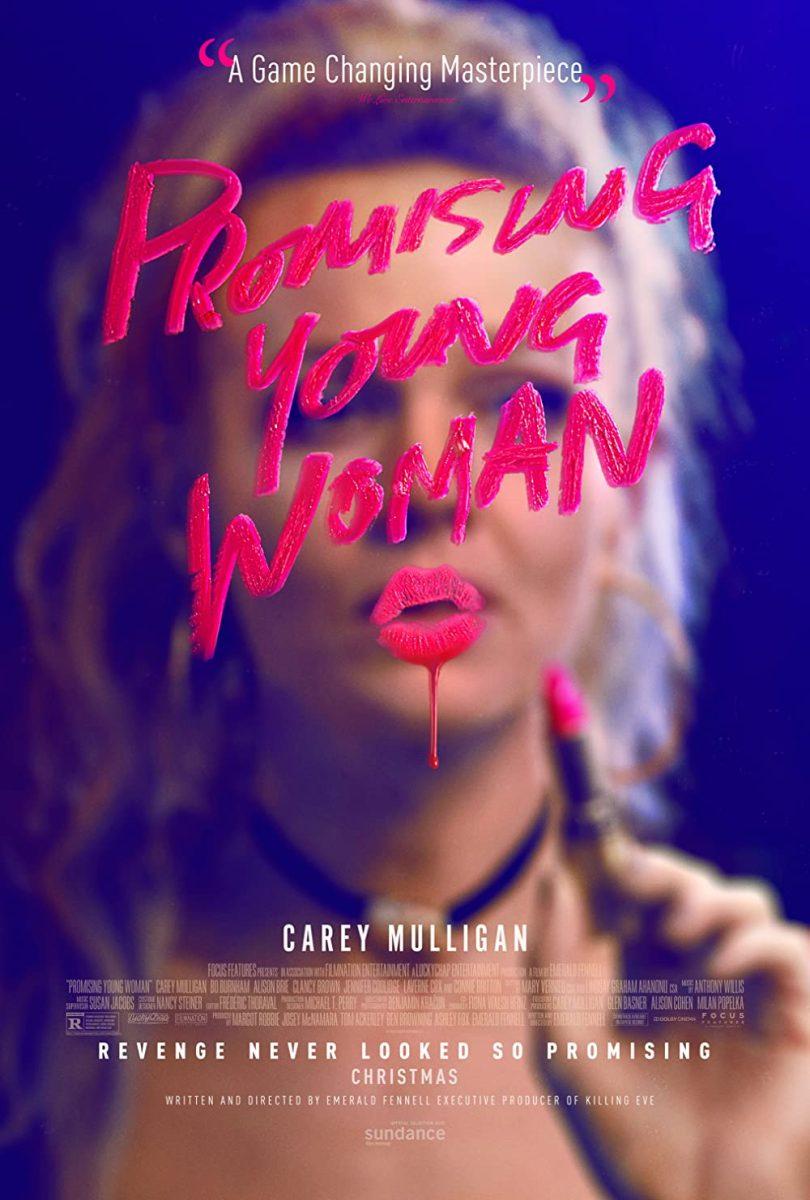Warning: Spoilers!
Trigger Warning for mentions of sexual assault and suicide
In the past few years a new genre of entertainment has arisen: “Good For Her” movies. The now popularized trope has taken up comfortable space in current mainstream and acclaimed plots, such as the newer “Promising Young Woman” (2020), “Gone Girl”(2014) and “Midsommar” (2019), and the older films like “Jennifer’s Body” (2009) and “Easy A” (2010). Before diving in, it might be helpful to establish what makes a typical “Good For Her” film. Here’s some criteria to follow in your assessments.
- Does the main female begin the film with a conflict, misassumption or attack on character?
- Does this problem lead to the woman’s plot of revenge?
- Does the protagonist undergo a major character transformation upon seeking revenge (i.e. decently good to morally gray)?
- Does the film end with a dramatic finale, leaving the character victorious but others harmed?
If the movie you are thinking about passes this background check with flying colors, chances are it falls under the “Good For Her” category. One of the main reasons the “Good For Her” trope has grown more and more popular is due to the controversial release of the newest “Joker” (2019) movie featuring a barely-bodied Joaquin Phoenix. The movie displayed the Joker’s transformation from the sad and isolated Arthur Fleck to the desensitized and successful criminal mastermind we now know. The movie’s victorious finale, wherein the Joker gained support and fanfare, led to much discussion over social media over whether or not the Joker was encouraging similar unhinged behavior or acting as a cautionary tale.
“Good For Her” movies live in a similar vein. “Promising Young Woman” introduces us to the protagonist, Cassie, as she pretends to be plastered at a club. Soon enough a guy comes up to her and suggests having sex despite Cassie’s inattentive state, and they move the conversation to the bedroom. Cassie breaks character before the sex starts, lectures the pursuing man and hopes to teach him a lesson about picking up girls. The movie continues on with these scenes of manipulation — both on the guy’s and Cassie’s parts — and eventually leads to Cassie’s victory of scaring off predatory guys. What makes this movie a “Good For Her” qualifier is Cassie’s motive and later grand execution of revenge. We learn that Cassie’s best friend was raped during college while under the influence. We also learn that the friend committed suicide shortly after. To attempt to save other women, Cassie takes it upon herself to warn guys about non-consensual hookups.
Emerald Fennell, director and writer of “Promising Young Woman,” won an Oscar for Best Original Screenplay for this movie. The attention from that win called into question the movie’s savior-like approach to a very nuanced and timely issue. By focusing on a white and cis female protagonist, the film’s message to combat sexual abuses takes on a “better luck next time” resolution. Additionally, the questionably victorious ending of Cassie’s vengeful scheme leaves us wondering if complete destruction for a few successes is even worth it.
Another more recent example of a “Good For Her” movie is the film adaptation of “Gone Girl.” Here, a wife suspicious of her husband’s fidelity plans her own kidnapping in an attempt to revert her husband’s attention back to her own marriage. “Midsommar” can also be included due to protagonist Dani’s coronation as May Queen as her negligent and selfish boyfriend burns alive a few yards away.
However, these sometimes uncomfortable, cringe-worthy scenes often make the whole “Good For Her” genre worthwhile. It offers reflection, conflict, action, gore and confusion. The stimulating trope makes us think about the appeal of immorality, the often destructive nature of vengeance and ever-present temptation to rebel. We see the underdog female become the hero, leaving her village to burn behind her as she rises beyond the ashes. Sometimes we witness a cautionary tale; other times they’re just fun to watch.



